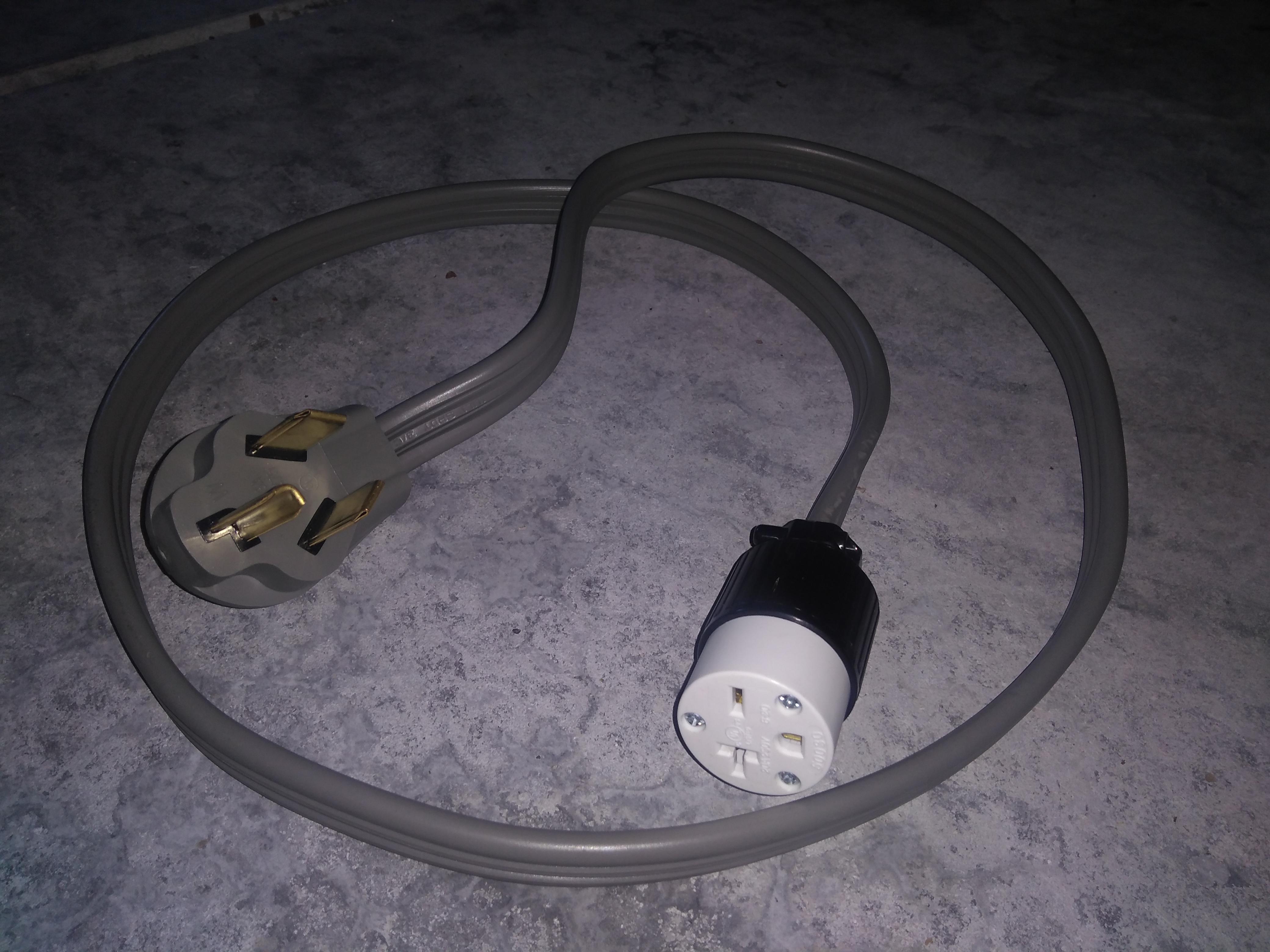Thought I'd post the following in case others are interested.
At home (California, US) I wired up a NEMA 6-20 outlet and use a 16 Amp Dostar for charging at home. However when we travel to family and charge at 110v we commonly needed the REX to fire up to get home. My brother in law is kind enough for us to charge there and gave the okay to use their 220v dryer outlet which should give us ample charge to get home without gas. I looked online for connectors and after some research I found it would be far cheaper to wire up my own.
Note. I am not responsible for any fires, or death if you follow this and do not understand electricity and risks involved
Plan
Buy Cable for Electric Dryer (in my case 3 pin) and NEMA 6-20R receptacle, then connect to two.
Parts:
- Generic 30-Amp, 3 Prong Dryer Cord
- Superior Electric YGA022F Straight Electrical Receptacle 3 Wire, 20 Amps, 250V, NEMA 6-20R
Note. My charger is 16 Amp. Ensure the cord and receptacle are rated higher than your charger.
Process (~ 10 mins)
1. Cut off the lugs/eyelets off the end of the Dryer cord
2. Strip back the insolation on the cord by 1/2 "
3. Connect the Neutral wire to the Neutral connector on the receptacle - use a multimeter to double check
4. Connect the 2 Live wires to the Live connectors - use a multimeter to double check
Test
1. Plug the dryer cord/receptacle in to an dryer outlet. - check that circuit breaker does trip, and cable does not get hot
2. Connect charger to receptacle. Check status of charger
3. Connect charger J1772 plug to car - check that circuit breaker does trip, and cable does not get hot
Cost
My Dryer cable was ~ $8.25 and receptacle was ~$7.99
Fits neatly in the frunk

At home (California, US) I wired up a NEMA 6-20 outlet and use a 16 Amp Dostar for charging at home. However when we travel to family and charge at 110v we commonly needed the REX to fire up to get home. My brother in law is kind enough for us to charge there and gave the okay to use their 220v dryer outlet which should give us ample charge to get home without gas. I looked online for connectors and after some research I found it would be far cheaper to wire up my own.
Note. I am not responsible for any fires, or death if you follow this and do not understand electricity and risks involved
Plan
Buy Cable for Electric Dryer (in my case 3 pin) and NEMA 6-20R receptacle, then connect to two.
Parts:
- Generic 30-Amp, 3 Prong Dryer Cord
- Superior Electric YGA022F Straight Electrical Receptacle 3 Wire, 20 Amps, 250V, NEMA 6-20R
Note. My charger is 16 Amp. Ensure the cord and receptacle are rated higher than your charger.
Process (~ 10 mins)
1. Cut off the lugs/eyelets off the end of the Dryer cord
2. Strip back the insolation on the cord by 1/2 "
3. Connect the Neutral wire to the Neutral connector on the receptacle - use a multimeter to double check
4. Connect the 2 Live wires to the Live connectors - use a multimeter to double check
Test
1. Plug the dryer cord/receptacle in to an dryer outlet. - check that circuit breaker does trip, and cable does not get hot
2. Connect charger to receptacle. Check status of charger
3. Connect charger J1772 plug to car - check that circuit breaker does trip, and cable does not get hot
Cost
My Dryer cable was ~ $8.25 and receptacle was ~$7.99
Fits neatly in the frunk
































![Electric Spin Scrubber, [IPX7 Waterproof ] [50KG Torque] Shower Scrubber with 9 Brush Heads, 2 Speed Mode, 4 Adjustable Angles, Electric Brush for Cleaning for Bathroom Floor Tile (Gray)](https://m.media-amazon.com/images/I/51R1fR54smL._SL500_.jpg)








